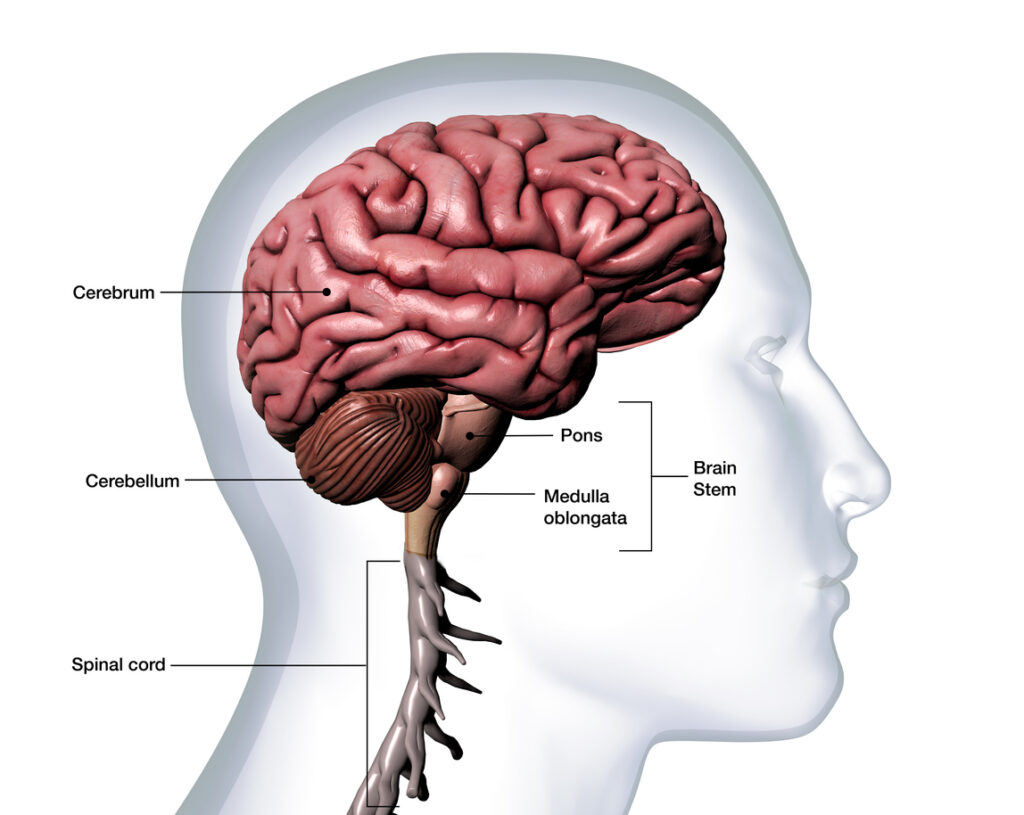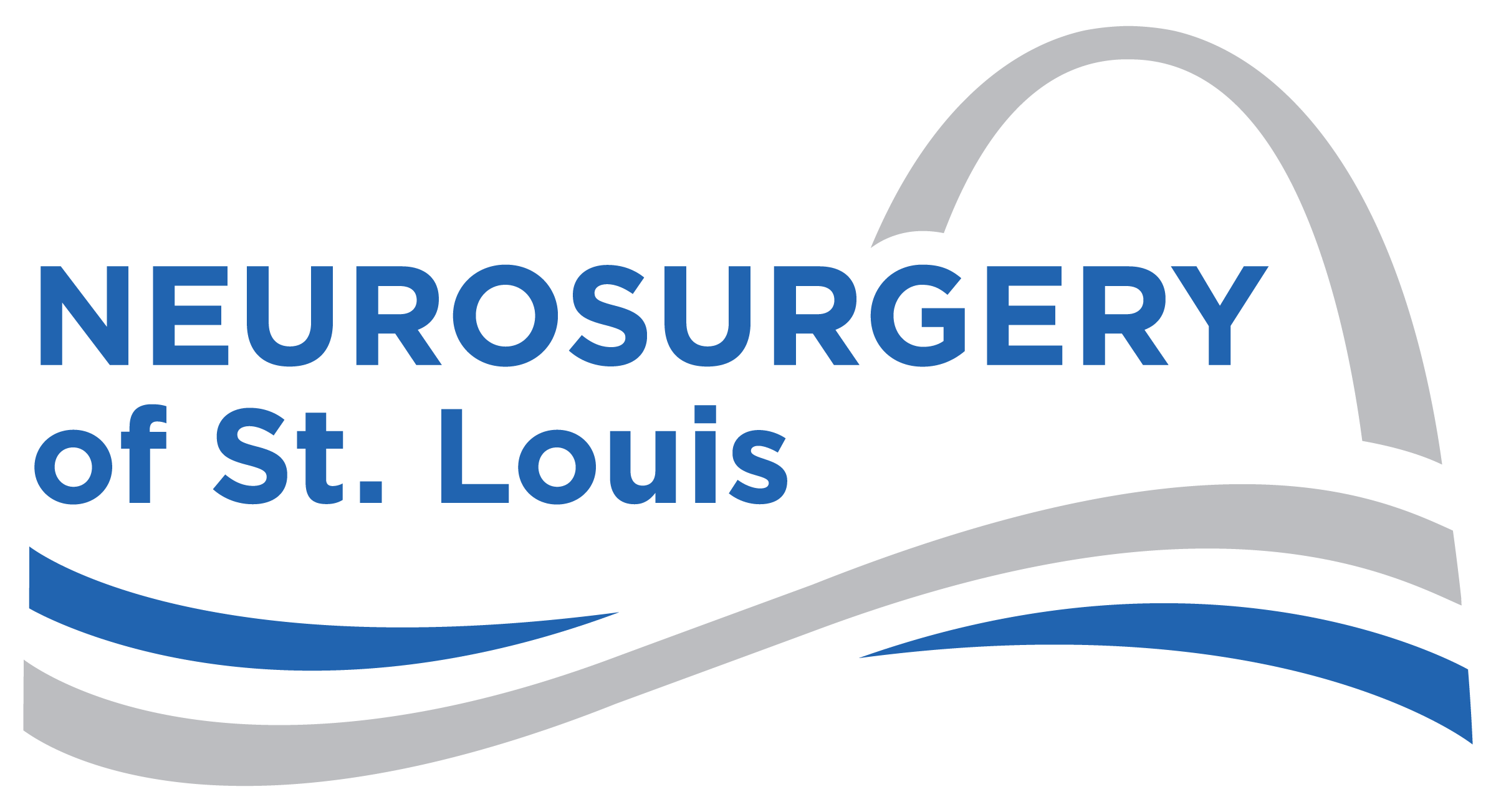Chiari Malformation
Occurs in about 1 out of every 1,000 people. Learn more below.

What is Chiari Malformation?
Chiari malformation is a condition in which brain tissue in the lower back part of your skull is forced into the spinal canal.
Most of the time, this happens because of a structural problem –- a misshaped or smaller-than-normal part of the skull. Because there is not enough room in the skull, part of the brain, specifically the cerebellum, grows downward into the spinal canal.
This can cause compression on the brain and brainstem at the base of the skull. Brain tissue in the spinal canal can also block the flow of cerebrospinal fluid.
What are the Symptoms of Chiari Malformation?
Symptoms vary from person to person and range from no symptoms to mild to severe symptoms.
In some people, symptoms are present at birth. In others, symptoms appear in late childhood or adulthood. Symptoms may also get better or worse at different points in time.
Common symptoms include:
- Headache pain – This is the most common symptom. Headache can start or worsen after coughing, sneezing or straining and often occur at the back of head. Pain may spread to the neck and shoulder. Pain is described as throbbing, stabbing or sharp.
- Balance and movement problems – Muscle weakness, coordination issues and numbness in the limbs can lead to problems with fine motor skills. Chiari malformation can also cause dizziness, vertigo and balance problems.
- Problems with hearing and vision – Some people hear a buzzing or ringing sound (tinnitus) and may have trouble hearing. Double vision (diplopia), blurred vision, abnormal eye movements (nystagmus) and sensitivity to light (photophobia) can also occur.
- Trouble with eating, drinking and speaking – Swallowing problems (dysphagia) can occur. Babies with Chiari malformation may vomit, gag or drool a lot. They may have trouble eating, and they may not be able to gain enough weight to develop properly.
- Scoliosis – The spine can become curved, otherwise known as a condition called scoliosis
- Difficulty sleeping – Insomnia can occur, sometimes due to pain from headaches.
- Bladder and bowel issues – Loss of control over the bladder and bowel can result from Chiari malformation.
- Other symptoms – Other symptoms include chronic fatigue, palpitations, fainting episodes and tingling or burning sensations in fingers, toes or lips.
Patients with Chiari malformation may also present with a concurrent spinal or brain abnormality, such as:
- Hydrocephalus – This life-threatening condition occurs when cerebrospinal fluid (CSF) builds up in the brain. Hydrocephalus happens when the CSF can’t drain. As CSF builds up, it causes pressure within the head and can result in mental disabilities and/or a misshaped skull. It can be fatal if not treated. A flexible tube (a shunt) may be placed to drain the CSF. This complication is most often seen in Chiari malformation type II.
- Syringomyelia and Hydromyelia – When CSF is not flowing properly at the junction between the brain and the spine, some CSF can accumulate in the spine. This fluid build up can cause damage to the spinal cord and causes a variety of health issues. These problems can include movement and balance problems, pain, muscle weakness, muscle spasms and contractions, numbness/decreased sensation to hot and cold, and loss of bladder and bowel control.
- Tethered cord syndrome – People with chiari malformations may have associated spinal conditions such as spina bifida. In some forms, there may be an abnormal attachment of the spinal cord to the spine that causes tension on the nerves with growth and movement. Additionally, children born with myelomeningocele (a severe form of spina bifida) are at increased risk for developing tethered cord syndrome as they grow. This occurs when the spinal cord becomes attached to the spine due to scarring from the original closure surgery. With tethered cord syndrome, there can be slow and progressive nerve damage that affect the muscles of the lower body and legs, and bowel and bladder function.
Chiari Malformation
Craniectomy for Chiari Malformation
What are the Symptoms of Chiari Malformation?
Symptoms vary from person to person and range from no symptoms to mild to severe symptoms.
In some people, symptoms are present at birth. In others, symptoms appear in late childhood or adulthood. Symptoms may also get better or worse at different points in time.
Common symptoms include:
- Headache pain: This is the most common symptom. Headache can start or worsen after coughing, sneezing or straining and often occur at the back of head. Pain may spread to the neck and shoulder. Pain is described as throbbing, stabbing or sharp.
- Balance and movement problems: Muscle weakness, coordination issues and numbness in the limbs can lead to problems with fine motor skills. Chiari malformation can also cause dizziness, vertigo and balance problems.
- Problems with hearing and vision: Some people hear a buzzing or ringing sound (tinnitus) and may have trouble hearing. Double vision (diplopia), blurred vision, abnormal eye movements (nystagmus) and sensitivity to light (photophobia) can also occur.
- Trouble with eating, drinking and speaking: Swallowing problems (dysphagia) can occur. Babies with Chiari malformation may vomit, gag or drool a lot. They may have trouble eating, and they may not be able to gain enough weight to develop properly.
- Scoliosis: The spine can become curved, a condition called scoliosis
- Difficulty sleeping: Insomnia can occur, sometimes due to pain from headaches.
- Bladder and bowel issues: Loss of control over the bladder and bowel can result from Chiari malformation.
- Other symptoms: Other symptoms include chronic fatigue, palpitations, fainting episodes and tingling or burning sensations in fingers, toes or lips.

How is Chiari Malformation Diagnosed?
To diagnose Chiari malformation, doctors perform a complete physical exam. Your doctor will test your movement, balance and sensation in your hands and feet. Doctors also check for memory problems, learning issues and cognitive delays.
To see a detailed image of the brain and spinal cord, your doctor may order:
- Magnetic resonance imaging (MRI) – This imaging test can show soft tissues and bones. It can evaluate the brain, spinal cord and cerebrospinal fluid. MRI can show the extent that the cerebellum is extending into the spinal canal.
- Cine MRI – This test is similar to a traditional MRI, but it allows your doctor to see the flow pattern of cerebrospinal fluid (CSF) around the base of the skull.
- Computed tomography (CT) – A CT scan helps detect problems in bones at the base of the skull and the spinal column.
How is Chiari Malformation Treated?
Your doctor will make a treatment plan based on the severity of symptoms. If symptoms are mild, your doctor will monitor your health with regular MRIs. More severe cases may need surgery. Surgical procedures to treat Chiari malformation include:
- Posterior fossa decompression – This is the most common procedure to treat Chiari malformation. A surgeon relieves pressure on the brain, giving it more room, by removing a part of the back of the skull called the posterior fossa.
- Laminectomy – Depending on how severe the Chiari malformation is, the surgeon may also need to remove a small portion of bones covering the spinal column to restore the flow of cerebrospinal fluid and allow more room for the spinal cord.
- Duraplasty – In this decompression surgery, the surgeon opens the dura (a membrane covering the brain). Then the surgeon sews in a patch to make the membrane larger so the brain has more room. This procedure enlarges the area and relieves pressure on the brain.
- Electrocautery – To create more room and allow the cerebrospinal fluid (CSF) to drain, surgeons may apply a small amount of electricity to shrink a small part of the brain called the cerebellar tonsils. The cerebellar tonsils retract without causing neurologic damage.
Contact Us
- Contact Us
Ready to learn more? Contact us today to get started.
Make an Appointment
New & Existing Patients: Request An Appointment
New and existing patients may request an appointment by filling out the form below. Someone from our team will be contacting you to schedule an appointment time.

